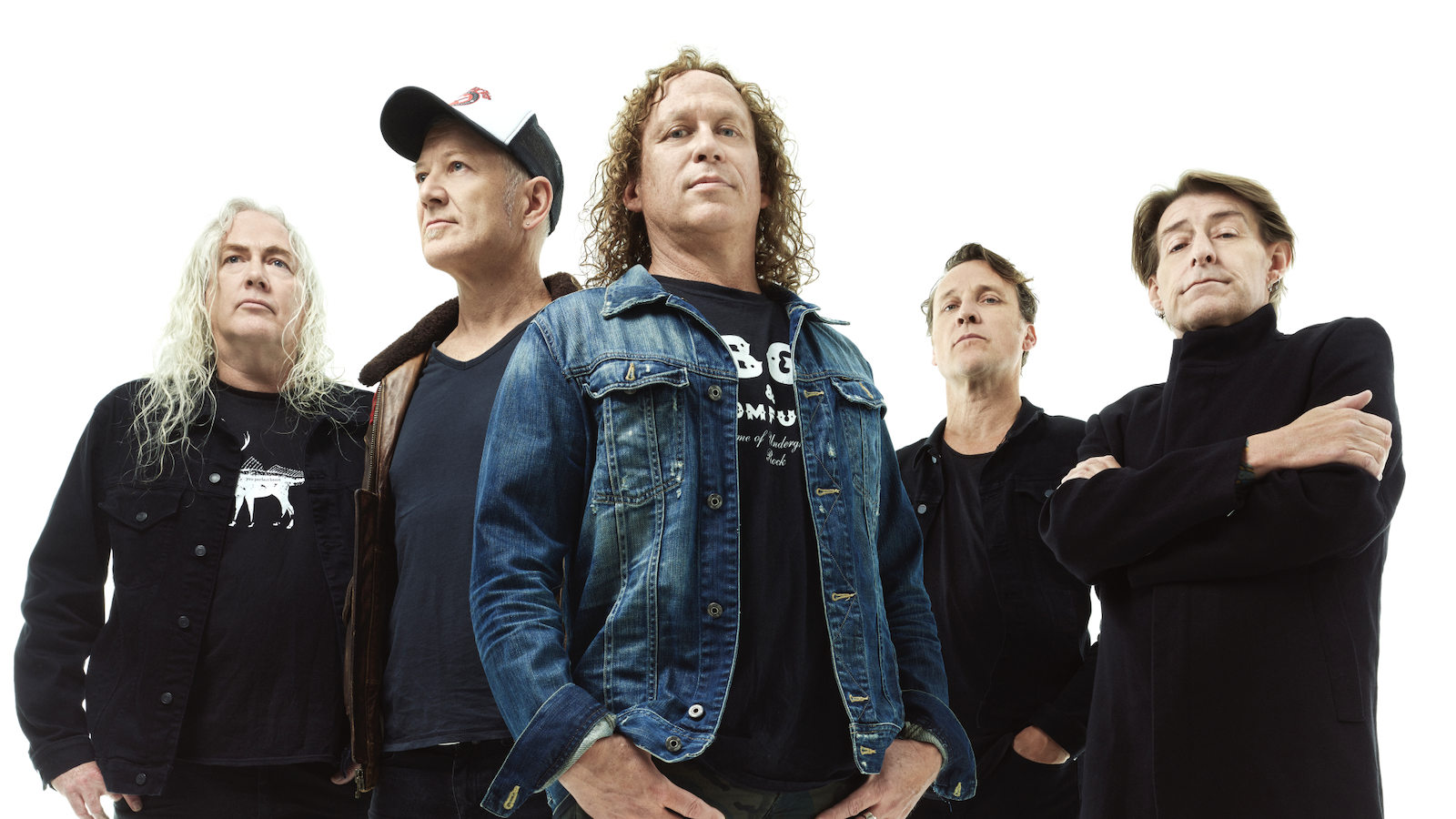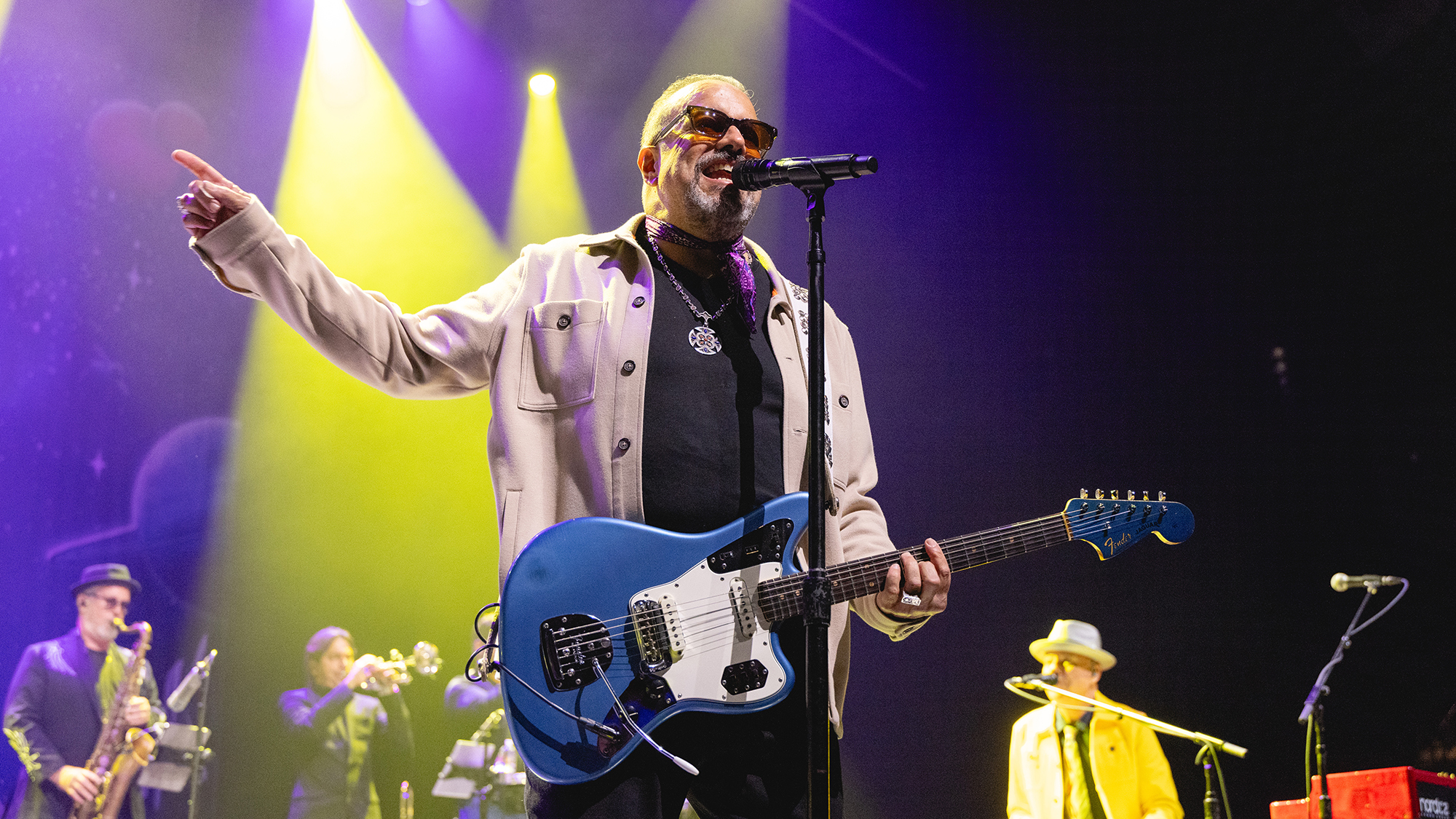The Screaming Jets’ Scott Kingman: “I love this whole ‘build your own’ situation that we seem to have been forced into”
With 30 years of practise, wisdom, and hard-as-nails rockin’ under their belts, the Jets have returned to their landmark 1991 debut to celebrate it with a new vision

The year was 1991: the Adelaide Crows made their explosive debut in the AFL, The Simpsons had just begun to poison the morals of our youth, and heavy-hitting, floor-thumping pub-rock still ruled Australian stages with an iron fist (clenching, of course, an ice-cold schooner). And of the bands wreaking havoc in that scene, The Screaming Jets were impenetrable – they rocked hard, the rolled fast, and on their messiest nights, the energy was authentic and infectious.
Such energy was immortalised that April when their debut full-length, All For One, hit – and then subsequently flew off – shelves. Thanks in no short part to the clashing, calamitous shredding of players Richard Lara and Grant Walmsley, the record shone with all the might and meatiness of AC/DC and The Angels, with its own distinctly bright, earwormish flair.
Lara and Walmsley left the band in ‘93 and ‘07, respectively, paving the way for Jimi ‘The Human’ Hocking and Scott Kingman to keep the searing spirit and riotous riffage of The Screaming Jets alive. In their hands, the fretwork on All For One sounds even more eruptive, tighter and more turbulent – while keeping true to the original, they’ve reinvigorated it with their own uniquely rocking touches.
To celebrate the LP’s 30th anniversary, the new and improved Screaming Jets endeavoured to whip up a new and improved version of All For One. COVID-19 meant the band were unable to link up in person, however, so they each recorded their parts from home, tasking Kingman and Steve James (the ‘91 record’s OG producer) to surgically fuse it all together. You’d never be able to tell, though – the new mix is downright enthralling, breathing new life into a record that, in all honesty, didn’t need it, but undoubtedly benefits greatly from it.
As Kingman tells Australian Guitar, there were a few key reasons why the Jets were able to work such mind-melting magic – it all comes down to authenticity, passion, and a ferocious DIY energy.
How does it feel to be looking back on this record today, three whole decades later?
I mean, it’s fantastic to see that the music still stands up. And it does – certainly for all of us in the band, at least. We’ve really enjoyed re-recording it. I, of course, wasn’t on the original recording, so I can’t take full credit for the original album – or any credit, in fact – but having played the material now for almost 15 years, it feels very much a part of my world. It was a great experience to relive it all and breathe into it a bit of what we’d developed over the last 10 to 15 years of playing. But y’know, [All For One] still stands on its own as a great record, a great mix, and a great time in the landscape of Australian rock.
What were some of the things you’d learned that you wanted to bring to the album?
I think it’s important to remember that, y’know, you could make a record on one day, then make the same record the next day and have it sound completely different. So if you insert 30 years between those two recordings, it’s inevitable that you’re going to bring something different to it. I think the true test of time lies in the quality of the song.
All the latest guitar news, interviews, lessons, reviews, deals and more, direct to your inbox!
There was obviously a very collaborative process that existed back in those days, with regards to studio engineers, producers, techs, mastering engineers, artwork departments, A&R, publicity… There was a massive team of people that would go into making a record, and that has very much changed. So there was a grassroots, kind of home-built version of this record that we knocked up during a period of time in which we couldn’t even get into a studio if we’d wanted to.
I guess you’ve gotta take into account all these elements that go into making the record, because they’re always going to have an impact on how it sounds in the end. The original album is still such a beautiful piece of work for what it is, so our plan was just to try and bring a new spin on that – y’know, we never tried to improve on it.
The production on this redux sounds absolutely phenomenal. What was it like getting Steve James back in the mix?
We’re very blessed to have had the experience of playing these songs so much over the years. I guess you could call that pre-production – we had 30 years of pre-production! So in that respect, a lot of that work had kind of been done. And y’know, most of us are savvy in regards to home recording; I’ve been a Pro Tools user for many, many years – in fact, that’s how I hooked up with the band, producing one of their later records.
I did very much help with that process, delivering the sessions to everyone and then combining all the individual recordings into one big session, which we then went on to sent to Steve. It was kind of an interesting process on the production side, because of course we had to think very differently. But I guess that’s what you do when you’re forced to lock down – you don’t look at all the things you can’t do, you just try to discover a means of getting the job done. And no doubt, that will continue into our next recordings.
I think that speaks to the spirit of rock ’n’ roll before the advent of technology – you’ve gotta make do with what you’ve got.
It would seem that way! It’s certainly a different result than we would’ve had if we’d all been in the one room, and that absolutely is a process that I really enjoy – and to be honest, miss. But that will no doubt come about again. You’ve just gotta get creative, and you’ve gotta find a new angle on things. It can be done with today’s technology, there’s no doubt about that. It’s all a means to an end, y’know? And if you’ve got that, you can always find a way to get it done. It’s a strange time in the world, but y’know, I always walk offstage after a gig saying, “Well, there’s another one they can’t take away from us!”
I guess my mentality throughout this whole pandemic has been to not let the situation take away what it is that we feel connected to – which is, y’know, playing in a band, playing music, performing… But it needs to be said that the performance side of it really is just one element of it, y’know? It’s this creative, collaborative, rock ’n’ roll, being-in-a-band kind of thing that brings it all together, and I’ll be f***ed if I’m going to let a pandemic take that away from us!
So what did the guitarsenal look like?
Strangely enough, I spent a lot of this time during lockdown filling my time building amplifiers. I had a couple of really great mates, like Warwicke Newman – who’s a great stage and amp tech in his own right – and then a local fellow here in Melbourne, Jason Tong, who’s got a company called Headfirst Amplification. He builds these beautiful PCBs that enabled me to build my dream JCM800s.
The JCM800 was very much a part of that original recording – that big, beautiful Marshall tone is a signature on that album – so I was hellbent on building an amp that would enable me to do that from home. I did have a JCM800 back in the day, but I’ve been using Fender DeVilles live for the last five or six years, and I really wanted to capture that Marshall tone. So I spent a lot of my time throughout this lockdown period building amps.
In the way of guitars, I mostly used my Les Paul Goldtop, which is a staple for me, and a Junior made for me by Andy Allen at Maton. I even pulled a Tele out – I actually made that myself in the first couple months of last year’s lockdown! So I had a very home-built tone, aside from the Goldtop, which I’ve had since 2000. I love this whole ‘build your own’ situation that we seem to have been forced into. It’s another means of staying sane. That’s how I’m getting through the pandemic – I’m building shit!

Ellie Robinson is an Australian writer, editor and dog enthusiast with a keen ear for pop-rock and a keen tongue for actual Pop Rocks. Her bylines include music rag staples like NME, BLUNT, Mixdown and, of course, Australian Guitar (where she also serves as Editor-at-Large), but also less expected fare like TV Soap and Snowboarding Australia. Her go-to guitar is a Fender Player Tele, which, controversially, she only picked up after she'd joined the team at Australian Guitar. Before then, Ellie was a keyboardist – thankfully, the AG crew helped her see the light…
